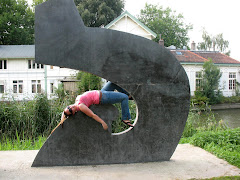 The Löwendenkmal - The Lion of Lucerne
The Löwendenkmal - The Lion of LucerneThe Swiss have been politically neutral for centuries. They also have a history of supplying mercenaries to foreign governments, and dignitaries trusted the Swiss Guards not to turn against them with shifting politics.
In 1792, after trying to escape the French Revolution, King Louis XVI, Marie-Antoinette and their children were hauled back to the Tuileries Palace in Paris, which was stormed by an angry mob of blood-thirsty Parisian revolutionaries. More than seven hundred Swiss officers and soldiers died there, unaware that the royal family was already gone.
The Lion of Lucerne was designed by Danish artist Bertel Thorvaldsen, and carved into the sandstone cliff of an old quarry in 1820 by Lucas Ahorn, a German stone-mason.
"The Lion lies in his lair in the perpendicular face of a low cliff - for he is carved from the living rock of the cliff. His size is colossal, his attitude is noble. How head is bowed, the broken spear is sticking in his shoulder, his protecting paw rests upon the lilies of France. Vines hang down the cliff and wave in the wind, and a clear stream trickles from above and empties into a pond at the base, and in the smooth surface of the pond the lion is mirrored, among the water-lilies.
Around about are green trees and grass. The place is a sheltered, reposeful woodland nook, remote from noise and stir and confusion–and all this is fitting, for lions do die in such places, and not on granite pedestals in public squares fenced with fancy iron railings. The Lion of Lucerne would be impressive anywhere, but nowhere so impressive as where he is."
I think Twain is right. Somehow, standing before that pool of water in the unnatural stillness that is rarely found in the presence of a multitude of tourists, you can almost feel the lion's anguish. Because it touched me, I wanted to share it with you. And it doesn't have to be soldiers who died 200 years ago, but stop for a minute and remember those who have died defending others.




















